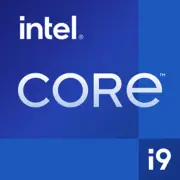Intel Core i9-7960X X-series

Intel Core i9-7960X X-series: Potenza per professionisti nel 2025
Introduzione
Anche a distanza di anni dal suo lancio, l'Intel Core i9-7960X rimane richiesto tra gli appassionati e i professionisti. Questo mostro a 16 core basato sull'architettura Skylake-X continua a dimostrare la sua attualità in compiti che richiedono multi-threading. Nel 2025, mantiene posizioni nel mercato secondario, e nuovi esemplari possono ancora essere trovati a un prezzo di $1000–1200. Scopriamo a chi e perché vale la pena prestare attenzione.
1. Caratteristiche principali
Architettura e processo tecnologico
Il processore è costruito sull'architettura Skylake-X utilizzando un processo tecnologico a 14 nm. Nonostante il processo di produzione sia obsoleto nei parametri del 2025, 16 core e 32 thread garantiscono un'elevata prestazione parallela. La frequenza base è di 2.8 GHz, con Turbo Boost fino a 4.4 GHz.
Caratteristiche chiave:
- Supporto per AVX-512 per accelerare i calcoli in applicazioni scientifiche e ingegneristiche.
- 22 MB di cache L3.
- 44 linee PCIe 3.0 (importante per workstation con più GPU o unità NVMe).
Prestazioni:
- Nei benchmark Cinebench R23, il punteggio multi-thread raggiunge ~25.000 punti, comparabile ai moderni CPU a 12 core di fascia media.
- Nelle attività single-thread, è inferiore ai nuovi processori a 5 nm (ad esempio, AMD Ryzen 9 7900X), ma per rendering o virtualizzazione questo non è critico.
2. Schede madri compatibili
Socket e chipset
L'i9-7960X utilizza il socket LGA 2066 ed è compatibile solo con il chipset Intel X299. Nel 2025, trovare nuove schede è difficile, ma modelli come ASUS ROG Rampage VI Extreme o MSI X299 SLI PLUS sono ancora disponibili in vendita ($300–500).
Indicazioni per l'acquisto:
- Modulo VRM: A causa dell'elevato TDP (165 W) è necessaria una scheda con almeno alimentazione a 8 fasi e dissipatori per i MOSFET. Ad esempio, ASUS Prime X299-A.
- Ingressi M.2: Per le unità NVMe controlla la presenza di dissipatori per evitare il throttling.
3. Tipi di memoria supportati
Il processore lavora solo con DDR4:
- Frequenze: Fino a 2666 MHz (senza overclock) o 3200+ MHz (con profili XMP).
- Configurazioni: Modalità a 4 canali — per la massima larghezza di banda utilizza 4 o 8 moduli.
- Raccomandazioni: La capacità ottimale è 64 GB (4×16 GB) con timing CL16.
Importante: Non è supportato DDR5 — questo è il principale svantaggio per un upgrade nel 2025.
4. Raccomandazioni per l'alimentatore
Considerando il TDP di 165 W e il possibile overclock:
- Potenza: Minimo 750 W (per un sistema con una sola scheda video), 850+ W per multi-GPU.
- Certificazione: 80 Plus Gold o Platinum (Corsair RM850x, Seasonic PRIME TX-750).
- Cavi: Alimentatori completamente modulari faciliteranno il montaggio e miglioreranno la ventilazione.
Esempio pratico: Gli utenti con un i9-7960X overcloccato a 4.6 GHz e RTX 4080 segnalano stabilità sotto carico solo con alimentatori da 850 W.
5. Vantaggi e svantaggi
Vantaggi:
- Prestazioni multi-thread: Rilevanti per il rendering (Blender, V-Ray), codifica video e virtualizzazione.
- Flessibilità della configurazione: 44 linee PCIe consentono di collegare più GPU o RAID di NVMe.
- Potenziale di overclocking: Con un buon raffreddamento, le frequenze possono essere aumentate del 20–25%.
Svantaggi:
- Consumo energetico: Con overclocking, il TDP raggiunge i 250 W.
- Piattaforma obsoleta: Nessun supporto per PCIe 4.0/5.0 e DDR5.
- Prezzo: I nuovi esemplari costano più rispetto ai moderni analoghi (ad esempio, AMD Ryzen 9 7950X).
6. Scenari di utilizzo
Attività lavorative
- 3D Rendering: Il tempo di rendering di una scena in Cinema 4D si riduce del 30% rispetto ai CPU a 12 core.
- Virtualizzazione: Esecuzione di 5–7 macchine virtuali senza perdita di reattività.
Giochi
- Streaming: NVIDIA Broadcast + OBS utilizzano tutti i thread, assicurando una trasmissione fluida in 4K.
- Gaming 4K: Le prestazioni dipendono dalla GPU, ma nei giochi dipendenti dal CPU (come Microsoft Flight Simulator) possono verificarsi cali a causa della bassa frequenza.
Multimedia
La codifica video 8K in HandBrake richiede il 15% in meno di tempo rispetto a Ryzen 9 5900X.
7. Confronto con i concorrenti
AMD Ryzen Threadripper 1950X (16 core, 32 thread)
- Vantaggi AMD: Prezzo inferiore (circa $800 per un nuovo), supporto PCIe 3.0 x64.
- Svantaggi: È inferiore in IPC (Istruzioni per ciclo) del 10–15%.
AMD Ryzen 9 7950X (16 core, 32 thread, Zen 4)
- Vantaggi: Processo tecnologico a 5 nm, DDR5, PCIe 5.0.
- Svantaggi: Prezzo superiore ($1200–1400), richiede la sostituzione della piattaforma.
Conclusione: L'i9-7960X è vantaggioso solo se si possiede una scheda madre X299 e si desidera risparmiare su un upgrade.
8. Suggerimenti pratici per il montaggio
- Raffreddamento:
- AIO con radiatore da 360 mm (ad esempio, NZXT Kraken X73).
- Raffreddamento ad aria: Noctua NH-D15 (controlla l'altezza nel case!).
- Case: Minimo 6 slot per ventole (Lian Li PC-O11 Dynamic).
- Memoria: Per la modalità a 4 canali acquista kit da 4 o 8 moduli.
Trucco: Aggiorna il BIOS della scheda madre all'ultima versione per migliorare la stabilità.
9. Conclusione finale: A chi si adatta l'i9-7960X nel 2025?
Questo processore è da considerare:
1. Professionisti con un budget limitato, che necessitano di multi-threading senza passare a DDR5.
2. Appassionati che già possiedono una piattaforma X299 e vogliono migliorare il sistema senza sostituire la scheda madre.
3. Specialisti che lavorano con software legacy, che richiedono stabilità e architettura collaudata.
Alternativa: Se stai costruendo un PC da zero, è meglio optare per i moderni AMD Ryzen 9 7950X o Intel Core i9-14900K — offrono un migliore rapporto qualità-prezzo, prestazioni ed efficienza energetica.
Conclusione
L'Intel Core i9-7960X è una leggenda tra le workstation, ma nel 2025 vale la pena acquistarlo solo in scenari specifici. Rimane un potente strumento per coloro che apprezzano il multitasking e sono disposti a tollerare i suoi svantaggi per ottenere prestazioni elevate.
Di base
Specifiche della CPU
Specifiche della memoria
Varie
Classifiche
Rispetto ad altre CPU
Condividi sui social media
Oppure linkaci
<a href="https://cputronic.com/it/cpu/intel-core-i9-7960x-x-series" target="_blank">Intel Core i9-7960X X-series</a>